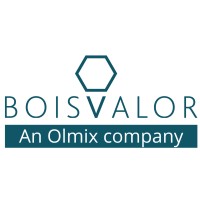Mycotoxins are fungal metabolites present in various cereals and feedstuffs. When ingested by the animals, they exert diverse toxic effects impacting animal health, well-being and production performance.
Good practices from the field to the feed mill can help reduce the mycotoxin contamination in feedstuffs and prevent undesirable effects. Specific ingredients, commonly called “toxin binders” can be added to animal feeds to reduce the exposure of the animals to mycotoxins.
More than 25% of harvested cereals are contaminated with various mycotoxins. The primary physiological effect of mycotoxins is the depression of the immune system caused by poly contamination, leading to lower performance.
All animal species are sensitive to mycotoxins, even at low levels. The key to combat mycotoxins in feed is using a wide spectrum adsorbent as the mycotoxin contamination profile changes constantly.
A good binder must also be efficient against mycotoxins like deoxynivalenol and fumonisins, which are difficult to bind because of their size and shape.
Olmix is one of the world leader on this market, thanks to a unique technology associating seaweed and clay, providing excellent binding capacities toward a large number of mycotoxins.
Additionally to providing in-feed solutions, Olmix accompanies its customers with various services to increase their understanding of mycotoxins, as well as the management of the risk for their production.
At the heart of Olmix’s mission are innovative tools designed to deepen our understanding of mycotoxins and facilitate their managements.
The Myco’Evaluator offers a thorough risk assessment, while the Myco’Calculator provides precise calculations for personalized management. Anticipate potential scenarios with the Myco’Simulator, available on Google Play and the App Store. Stay informed with MycoNews, your dedicated news source for mycotoxins. Streamline your approach to food safety and animal health with Olmix’s solutions.
Myco’Kingdom
The Myco’Evaluator allows to identify risk factors of mycotoxin contamination thanks to the audit of crop management, storage conditions and animals’ symptoms.

The Myco’Screen complete package is aimed to provide all the tools to help feed millers, nutritionists and farmers to optimize their mycotoxin analysis strategy for a better mycotoxin risk management.
The Myco’Calculator allow to calculate the optimum dosage of MT.X+/MMi.S with a precision of 100g/ton of feed.
The Myco’Simulator allows to display the 6 major mycotoxins in 3D, to compare them and to have access to their physiochemical characteristics and information on their toxicity towards animals.
Myco’News
 Emerging mycotoxins: are Enniatins a real challenge?
Emerging mycotoxins: are Enniatins a real challenge?
 The hidden threat of corn: what 2024 revealed in USA and LATAM
The hidden threat of corn: what 2024 revealed in USA and LATAM
The hidden threat of corn: what 2024 revealed in USA and LATAM
 Tackling Deoxynivalenol in Dairy Farming
Tackling Deoxynivalenol in Dairy Farming
Tackling Deoxynivalenol in Dairy Farming
 Dose of Deoxinivalenol recommended by EFSA affects swine health
Dose of Deoxinivalenol recommended by EFSA affects swine health
Dose of Deoxinivalenol recommended by EFSA affects swine health
 Mycotoxins in petfood
Mycotoxins in petfood
Mycotoxins in petfood
 DON affects gut microflora in swine and poultry
DON affects gut microflora in swine and poultry
DON affects gut microflora in swine and poultry
 Fighting mycotoxins in poultry with an algoclay-based decontaminant
Fighting mycotoxins in poultry with an algoclay-based decontaminant
Fighting mycotoxins in poultry with an algoclay-based decontaminant
 Evolution of deoxynivalenol in wheat during storage
Evolution of deoxynivalenol in wheat during storage
Evolution of deoxynivalenol in wheat during storage
 Centralization of all mycotoxin data in a single database: MycoCentral
Centralization of all mycotoxin data in a single database: MycoCentral
Centralization of all mycotoxin data in a single database: MycoCentral
 Particle size matters
Particle size matters
Particle size matters
 New biomarkers for exposure to fumonisins in chickens?
New biomarkers for exposure to fumonisins in chickens?
New biomarkers for exposure to fumonisins in chickens?
 World Mycotoxin Forum: Reviewing 50 Years Of Mycotoxin Research
World Mycotoxin Forum: Reviewing 50 Years Of Mycotoxin Research
World Mycotoxin Forum: Reviewing 50 Years Of Mycotoxin Research
 Interactions Between Drugs And Mycotoxins
Interactions Between Drugs And Mycotoxins
Interactions Between Drugs And Mycotoxins
 Research insights: 44th Mycotoxin Workshop
Research insights: 44th Mycotoxin Workshop
Research insights: 44th Mycotoxin Workshop
 Effect of climate change on mycotoxins
Effect of climate change on mycotoxins
Effect of climate change on mycotoxins
 EU revises toxicity level of DON for poultry
EU revises toxicity level of DON for poultry
EU revises toxicity level of DON for poultry
 Biomonitoring of mycotoxins in pigs
Biomonitoring of mycotoxins in pigs
Biomonitoring of mycotoxins in pigs
 Toxicity of new type A trichothecenes NX and 3ANX
Toxicity of new type A trichothecenes NX and 3ANX
Toxicity of new type A trichothecenes NX and 3ANX
 Global Myco’Screen Overview on 2021 raw materials
Global Myco’Screen Overview on 2021 raw materials






